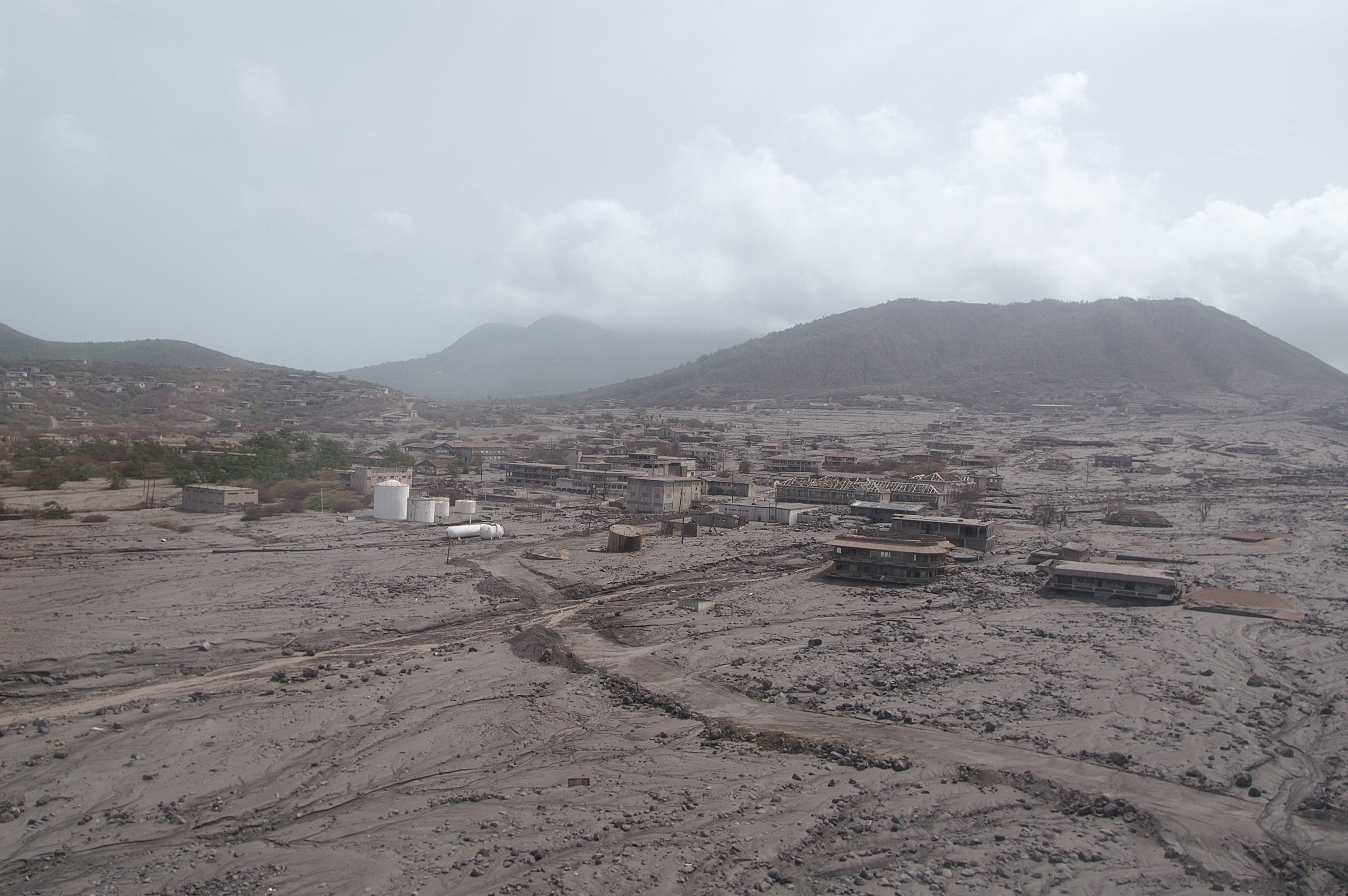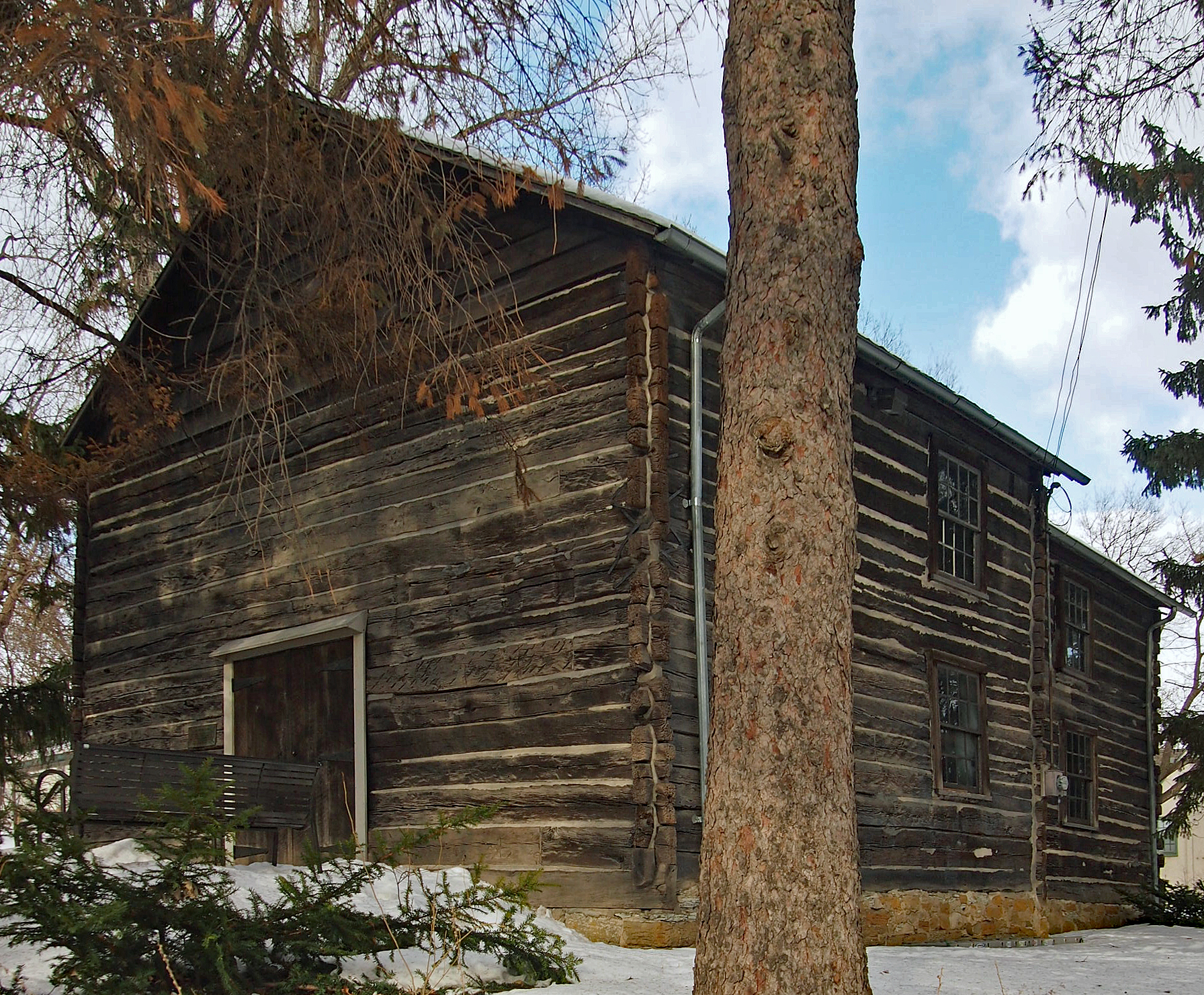|
Jefferson Prairie Settlement, Wisconsin
Jefferson Prairie Settlement was a pioneer colony of Norwegian-Americans located in the Town of Clinton, in Rock County, Wisconsin, United States. This site and the nearby Rock Prairie settlement outside Orfordville served as centers for both Norwegian immigration and developments within the Evangelical Lutheran Church in America. The unincorporated community of Bergen is in the vicinity of Jefferson Prairie Settlement. Background Ole Knudsen Nattestad and Ansten Nattestad, two brothers from the valley of Numedal in southeastern Norway, emigrated in 1837. Numedal is a traditional district located in the county of Buskerud, Norway. Together the Nattestad brothers played a key role in promoting immigration from Norway and for directing immigrants to southern Wisconsin and northern Illinois. Ole Knutson Nattestad first came to the Town of Clinton in 1838. Ansten Nattestad returned to Norway to have the letters of Ole Rynning published. Ole Rynning (1809–1838) had been an ea ... [...More Info...] [...Related Items...] OR: [Wikipedia] [Google] [Baidu] |
Ghost Town
A ghost town, deserted city, extinct town, or abandoned city is an abandoned settlement, usually one that contains substantial visible remaining buildings and infrastructure such as roads. A town often becomes a ghost town because the economic activity that supported it (usually industrial or agricultural) has failed or ended for any reason (e.g. a host ore deposit exhausted by mining). The town may have also declined because of natural or human-caused disasters such as floods, prolonged Drought, droughts, extreme heat or extreme cold, government actions, uncontrolled lawlessness, war, pollution, or nuclear and radiation accidents and incidents, nuclear and radiation-related accidents and incidents. The term can sometimes refer to cities, towns, and neighborhoods that, though still populated, are significantly less so than in past years; for example, those affected by high levels of unemployment and dereliction. Some ghost towns, especially those that preserve period-specific ... [...More Info...] [...Related Items...] OR: [Wikipedia] [Google] [Baidu] |
Iroquois County, Illinois
Iroquois County is a county located in the northeast part of the U.S. state of Illinois. According to the 2020 United States Census, it has a population of 27,077. It is the only county in the United States named Iroquois. The county seat is Watseka. The county is located along the border with Indiana. History Iroquois County was created on February 26, 1833, out of a portion of Vermilion County. It was named for the Iroquois River, which was itself named for the Iroquois people. The first county seat was established at the town of Iroquois in 1837, though no official buildings were constructed there and offices were rented. Several other sites for the county seat were examined, and in 1839 it was moved to Middleport; a court house and jail were built there. There was a long battle between Middleport and Watseka (also known as South Middleport) as to which should be the county seat; in 1865, it was finally moved to Watseka. The town of Middleport no longer exists, but there ... [...More Info...] [...Related Items...] OR: [Wikipedia] [Google] [Baidu] |
Geography Of Rock County, Wisconsin
Geography (from Ancient Greek ; combining 'Earth' and 'write', literally 'Earth writing') is the study of the lands, features, inhabitants, and phenomena of Earth. Geography is an all-encompassing discipline that seeks an understanding of Earth and its human and natural complexities—not merely where objects are, but also how they have changed and come to be. While geography is specific to Earth, many concepts can be applied more broadly to other celestial bodies in the field of planetary science. Geography has been called "a bridge between natural science and social science disciplines." Origins of many of the concepts in geography can be traced to Greek Eratosthenes of Cyrene, who may have coined the term "geographia" (). The first recorded use of the word γεωγραφία was as the title of a book by Greek scholar Claudius Ptolemy (100 – 170 AD). This work created the so-called "Ptolemaic tradition" of geography, which included "Ptolemaic cartographic theory." ... [...More Info...] [...Related Items...] OR: [Wikipedia] [Google] [Baidu] |
Rasmus B
*
*
{{Disambiguation ...
Rasmus may refer to: People * Rasmus (given name) * Rasmus (surname) Arts and entertainment * The Rasmus, a Finnish rock band formerly called Rasmus ** ''The Rasmus'' (album), a self-titled studio album by the Finnish band * the title character of ''Rasmus Klump'', a Danish comic strip series * Rasmus, a character in books by Swedish author Astrid Lindgren Places * Rasmus, Michigan, an unincorporated community See also *Rasmussen ("Rasmus' Son"), family name derived from "Rasmus" *Erasmus (other) Erasmus (1466–1536) was a Dutch humanist scholar. Erasmus may also refer to: Arts and entertainment * Erasmus (''Dune''), a fictional robot in the ''Legends of Dune'' series by Kevin J. Anderson and Brian Herbert * Erasmas, the narrator and pr ... [...More Info...] [...Related Items...] OR: [Wikipedia] [Google] [Baidu] |
Martin Ulvestad
Martin Ulvestad (24 December 1865 – 19 January 1942) was a Norwegian-born American historian and author whose writings focused on Norwegian-American immigration. He was a pioneer in documenting the early history of Norwegian settlers in America. Biography Ole Johannes Martinus Ulvestad was born in Volda Municipality in Møre og Romsdal, Norway. He was the son of Peder Olsen Ulvestad (1825–1918) and Alexandrine Knudsdatter (1824–1894). He immigrated to the United States in 1886. During his next three to four years, he worked as a book printer and as a typesetter for various English, German and Scandinavian language newspapers. Ulvestad published an English- Danish- Norwegian dictionary in 1895. Ulvestad subsequently collected and published extensive information regarding Norwegian-American immigration and settlement in North America. His books provided biographical information, history of the settlements associated with Norwegian immigration and information regarding thos ... [...More Info...] [...Related Items...] OR: [Wikipedia] [Google] [Baidu] |
Wisconsin Highway 140
Wisconsin ( ) is a U.S. state, state in the Great Lakes region, Great Lakes region of the Upper Midwest of the United States. It borders Minnesota to the west, Iowa to the southwest, Illinois to the south, Lake Michigan to the east, Michigan to the northeast, and Lake Superior to the north. With a population of about 6 million and an area of about 65,500 square miles, Wisconsin is the List of U.S. states and territories by population, 20th-largest state by population and the List of U.S. states and territories by area, 23rd-largest by area. It has List of counties in Wisconsin, 72 counties. Its List of municipalities in Wisconsin by population, most populous city is Milwaukee; its List of capitals in the United States, capital and second-most populous city is Madison, Wisconsin, Madison. Other urban areas include Green Bay, Wisconsin, Green Bay, Kenosha, Wisconsin, Kenosha, Racine, Wisconsin, Racine, Eau Claire, Wisconsin, Eau Claire, and the Fox Cities. Geography of Wiscon ... [...More Info...] [...Related Items...] OR: [Wikipedia] [Google] [Baidu] |
Augustana Synod
The Augustana Evangelical Lutheran Church (previously the Augustana Lutheran Synod and also Scandinavian Evangelical Lutheran Augustana Synod in North America and Swedish Evangelical Lutheran Augustana Synod in North America) was a Lutheran church body in the United States that was one of the churches that merged into the Lutheran Church in America (LCA) in 1962. It had its roots among the Swedish immigrants in the 19th century. In 1961, just before its merger into the LCA, the Augustana Synod had 1,353 pastors, 1,219 congregations, and 619,040 members. Formation The Scandinavian Evangelical Lutheran Augustana Synod in North America was established in 1860. The organizing meeting was held at the Jefferson Prairie Settlement, near Clinton, Wisconsin on June 5–8. A group of Swedish Lutheran pastors including Jonas Swensson, Lars Paul Esbjörn, Tuve Hasselquist, Eric Norelius, and Erland Carlsson pioneered development of the Augustana Synod. ''Augustana'' is a shortened ve ... [...More Info...] [...Related Items...] OR: [Wikipedia] [Google] [Baidu] |
Norwegian Evangelical Lutheran Church In America
The Synod of the Norwegian Evangelical Lutheran Church in America, commonly called the Norwegian Synod, was founded in 1853. It included churches in Illinois, Iowa, Minnesota, and Wisconsin. History In February 1853, several Lutheran ministers including Claus Lauritz Clausen, Hans Andreas Stub, Adolph Carl Preus, Herman Amberg Preus, G. F. Dietrichson, Jacob Aall Ottesen, and R. D. Brandt organized the Norwegian Evangelical Lutheran Church in America, commonly known as the Norwegian Synod. It was organized at Koshkonong and Luther Valley near the Jefferson Prairie Settlement outside Madison, Wisconsin. Among the first denominational leaders was Ulrik Vilhelm Koren. The synod adopted the ritual of the Church of Norway. In 1868 the name was changed to the Synod for the Norwegian Evangelical Lutheran Church in America. In the early years Norwegian Synod seminary students were sent to Concordia Seminary in St. Louis, Missouri. Luther College was founded near La Crosse, Wisconsin, ... [...More Info...] [...Related Items...] OR: [Wikipedia] [Google] [Baidu] |
Elling Eielsen
Elling Eielsen (September 19, 1804 – January 10, 1883) was a Norwegian-American minister and Lutheran Church leader. He was the first Norwegian Lutheran minister in the United States. Background Eielsen was born and raised on the farm of Sundve (''Sundve på Vossestrand'') in Voss, Norway. The son of Eiel Ingebrigtsen Sundve and Anna Ellingsdatter Sundsvaal, he was brought up in the Lutheran religious tradition of Hans Nielsen Hauge. After his own religious awakening at the age of 25, he moved to Bergen, where he apprenticed as a carpenter and blacksmith and also enlisted in the army. He acted as a spiritual leader among his fellow soldiers, and in 1832, he accepted his first mission as a lay preacher. He traveled for several years extensively throughout Norway and also preached in Denmark where he was arrested and briefly imprisoned. Immigration Eielsen immigrated to the United States in 1839. In 1843, he was formally ordained as a Lutheran minister by Francis Arnold Hoffma ... [...More Info...] [...Related Items...] OR: [Wikipedia] [Google] [Baidu] |
Eielsen Synod
The Eielsen Synod (originally named the Evangelical Lutheran Church in America) was a Lutheran church body. It was founded in 1846 at Jefferson Prairie Settlement, Wisconsin, by a group of Haugean Lutherans led by Elling Eielsen, the first Norwegian Lutheran minister in the United States. Background There were church splits in 1848 and 1856. In 1876, the synod numbered 24 pastors, 59 congregations, and 7,500 members. That year a major split occurred and many of the clergymen and congregations left the Eielsen Synod and organized the Hauge Synod. Elling Eielsen and his supporters continued the synod under the 1846 church constitution in Jackson, Minnesota. The Eielsen Synod emphasized the importance of repentance, conversion, and lay preaching. It opposed ritualism, formal worship, clerical vestments, and clerical authority. The Eielsen Synod had 1,500 members in ten churches in 1953. By 1971, it had declined to 75 members scattered among churches in French Lake and Jackson, Mi ... [...More Info...] [...Related Items...] OR: [Wikipedia] [Google] [Baidu] |
Muskego Settlement
The Muskego Settlement was one of the first Norwegian-American settlements in the United States. Situated near today's Muskego, Wisconsin, the Muskego Settlement covered areas within what is now the town of Norway, Wisconsin, Norway in Racine County, Wisconsin. History John Nielsen Luraas (1813–1890) first led the colony which was founded in 1839, primarily by immigrants from the Norwegian county of Telemark. They had been encouraged to seek their fortunes in Wisconsin by the pioneer Nattestad brothers. Ansten and Ole Knudsen Nattestad had immigrated during 1838 from Veggli in Numedal, Norway, to establish the first Norwegian-American immigrant community in Wisconsin at Jefferson Prairie Settlement of Rock County, Wisconsin, Rock County. The party staked out in two sections in Waukesha County. The following year two other settlers, Søren Tollefsen Bache (1814–1890) and Johannes Johannsen, settled in an adjacent area in Racine County, just south of the first settlement, in ... [...More Info...] [...Related Items...] OR: [Wikipedia] [Google] [Baidu] |



